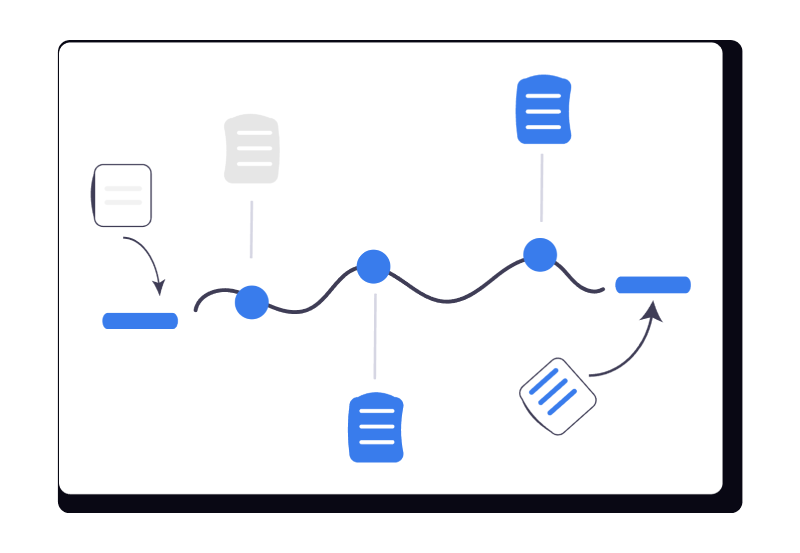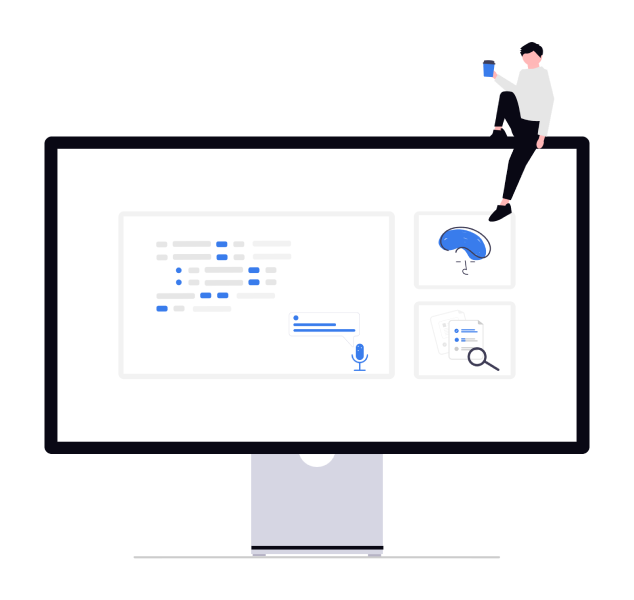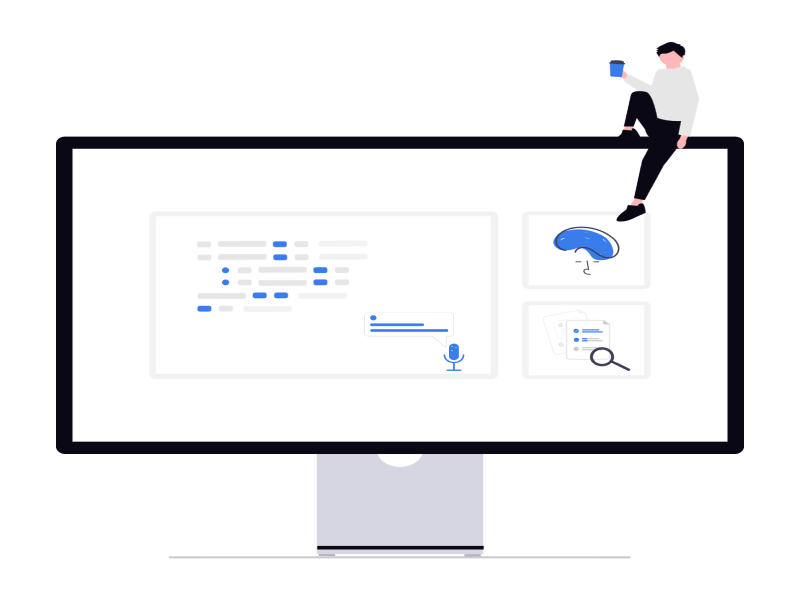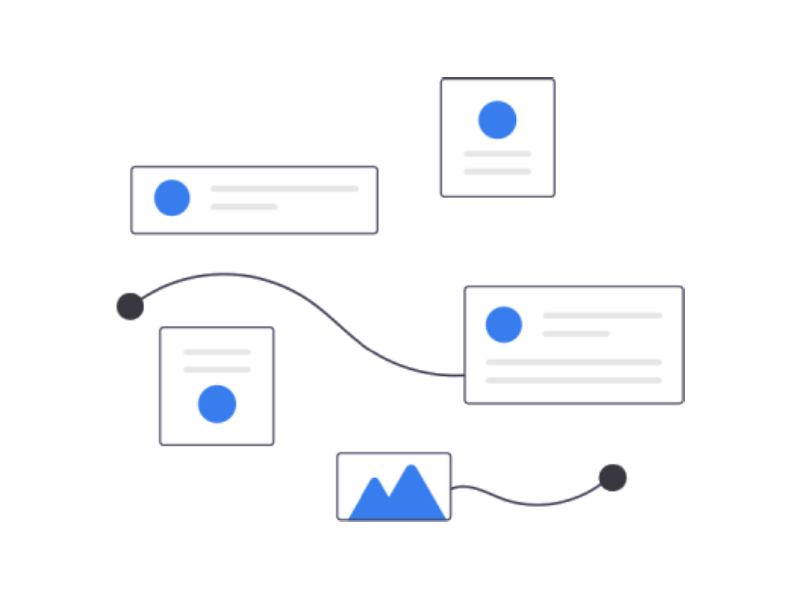What’s happening right now — and why this debate matters
Google’s March 2024 core update was one of the most consequential in years. The company confirmed that its Helpful Content system — first introduced in 2022 — is now fully integrated into its core ranking systems. That shift was more than branding: “helpfulness” became a system-level signal applied across queries and site types, rather than a separate layer.
At the same time, Google unveiled three new spam policies targeting:
- Scaled content abuse — mass AI/programmatic content with little originality.
- Expired domain abuse — recycling domains purely for authority transfer.
- Site reputation abuse — so-called “parasite SEO” where low-quality content lives on reputable host domains.
According to Google, the integration and new policies reduced “unhelpful” results in search by 45%. That’s a significant claim — one meant to signal to SEOs that intent-satisfying content is now structurally prioritized.
The impact on rankings was immediate. Semrush Sensor and other volatility trackers showed spikes across both desktop and mobile SERPs in March, April, and again during mid-2025. E-commerce, travel, and news verticals were among the hardest hit. Sites leaning on programmatic content or third-party publishing strategies saw steep losses, while those with high engagement and first-hand expertise gained ground.
For practitioners, the bottom line is clear: Google is tightening the relationship between crowd signals (what users click, dwell on, and discuss) and algorithm signals (links, entities, technical health, spam classifiers). The update rewards overlap between the two, but punishes manufactured shortcuts
What exactly are “crowd signals” vs. “algorithm signals”?
When SEOs talk about ranking factors, they usually mean algorithm signals — the traditional levers Google acknowledges: content relevance, backlinks, technical performance, and sitewide quality. These are the signals you can measure in audits, track in Search Console, and optimize in sprints.
But in 2025, we can’t ignore crowd signals — user-driven behaviors and external demand markers that Google’s systems are increasingly capable of detecting. These aren’t just “nice to have” metrics; evidence from the DOJ antitrust trial and leaked documentation shows systems like Navboost rely on aggregated click and engagement data to refine search results.
Algorithm signals (systematic trust & quality):
- Crawl and indexation coverage
- Semantic relevance and entity mapping
- Link graph strength and authority
- Core Web Vitals and page experience
- Spam classifiers and policy compliance
Crowd signals (user preference & demand at scale):
- Click-through rate (CTR) by query type
- Long clicks vs. pogo-sticking back to SERPs
- Repeat selections of the same domain/brand
- Forum and UGC momentum (e.g., Reddit or Quora visibility surges)
The distinction is important: algorithm signals measure the system’s evaluation of your site, while crowd signals measure the audience’s behavior toward your site. Increasingly, the two flow into each other. For example, long-click data (crowd) may help systems reinforce content deemed authoritative through E-E-A-T and links (algorithm).
As Mike King of iPullRank has argued, “Behavioral data isn’t separate — it’s part of the reranking loop.” That means SEOs must think about rankings not just as a reflection of what Google crawls but also how users respond.
| Crowd Signals (User Behavior) | Algorithm Signals (System Rules) |
| CTR by query type | Crawl/index coverage |
| Long clicks & dwell time | Semantic relevance & entity mapping |
| Repeat brand/domain selections | Link graph strength & trust |
| Forum/UGC momentum (Reddit, Quora) | Core Web Vitals & page experience |
| Engagement in SERPs | Spam classifiers & policy compliance |
The Navboost Revelation
The biggest insight came from leaked testimony about a system called Navboost.
Described in court exhibits and later analyzed by Mike King (iPullRank), Navboost aggregates click data to rerank search results.
Here’s the simplified version:
- “Good clicks” — long engagements where users stay on the result — send positive signals.
- “Bad clicks” — quick returns to Google — send negative ones.
- These patterns are stored over long rolling windows, sometimes 13 to 18 months.
Navboost effectively acts as a behavioral quality layer.
If ten results are algorithmically strong, it decides which ones people actually like best.
That doesn’t make CTR a standalone ranking factor — but it turns user satisfaction into a continuous feedback loop.
How Do Google’s 2024–2025 Policies Curb Manipulation?
The March 2024 core update wasn’t just about integrating “helpfulness” into core systems — it also introduced three major spam policies aimed squarely at tactics designed to fake crowd demand.
Policy highlights
- Scaled content abuse
- Targets mass AI- or programmatically-generated pages with little originality or value.
- Example: thousands of thin product roundups auto-published across subdomains.
- Targets mass AI- or programmatically-generated pages with little originality or value.
- Expired domain abuse
- Prevents recycling expired domains purely to pass authority.
- Example: buying a defunct university blog domain to host casino content.
- Prevents recycling expired domains purely to pass authority.
- Site reputation abuse (aka parasite SEO)
- Blocks low-quality third-party content hosted on trusted domains.
- Example: coupon pages or payday loan reviews appearing on news websites under subfolder agreements.
- Blocks low-quality third-party content hosted on trusted domains.
Google tightened its site reputation abuse language again in late 2024, making it clear that publisher involvement doesn’t excuse irrelevant content. That update signaled more aggressive manual actions and algorithmic filtering through 2025.
Enforcement and community response
- Search Engine Land and other outlets reported widespread deindexing of parasite SEO placements in Q4 2024.
- The Verge covered regulatory attention in Europe, where publishers complained about lost revenue from third-party content crackdowns.
- Community chatter on Twitter/X and WebmasterWorld showed many affiliate marketers scrambling to pivot away from rented domain strategies.
Takeaway for SEOs
The message is consistent: earned crowd signals are rewarded, manufactured ones are filtered or penalized.
- If users find and engage because your content solves their problem → rewarded.
- If engagement is artificial or piggybacked on another domain’s authority → suppressed.
As Marie Haynes summed up: “Google is getting much better at separating authentic engagement from signals that are manufactured. You can’t rent your way into trust anymore.”
How Should SEOs Measure Crowd and Algorithm Signals Together?
With Google hardening its stance on spam and tightening helpfulness into the core, SEOs in 2025 need to measure both layers of ranking signals — crowd and algorithm — in a structured way. The challenge is avoiding tunnel vision. Chasing clicks alone or relying only on technical audits risks missing the broader picture.
Crowd-side KPIs (user-driven signals)
- CTR by query class: Look at informational vs. transactional queries separately, since click patterns differ.
- Post-click satisfaction proxies: Return-to-SERP behavior, long-click duration, and reduced pogo-sticking.
- Repeat brand/domain selection: Frequency of users choosing the same site over time.
- Forum/UGC share of voice: Tracking mentions, citations, or discussion threads on Reddit, Quora, and niche boards.
Algorithm-side KPIs (systematic signals)
- Crawl & indexation coverage: Monitor via Google Search Console indexing reports.
- Entity mapping: Ensure content is aligned with recognized entities in Google’s Knowledge Graph.
- Link quality audits: Focus on trust and relevance rather than raw volume.
- Core Web Vitals: LCP, INP, CLS benchmarks as Google continues to emphasize performance.
- Structured data health: Validate schema for eligibility in SERP features.
Volatility monitors
Update-driven shifts can mask signal strength. That’s why annotating analytics around confirmed/unconfirmed updates is critical.
- Semrush Sensor, RankRanger, and MozCast consistently highlight volatility spikes.
- SEOs should overlay this data with their site KPIs to isolate whether drops are due to algorithm recalibration, technical issues, or poor user satisfaction.
As Mike King (iPullRank) noted in his Navboost analysis, “You can’t measure in absolutes. The real task is triangulation.” In other words, use multiple data points to see whether crowd signals and algorithm signals align — or diverge.
Caveat
Leaked documents and trial testimony confirm click signals are used, but they don’t reveal weights. That means practitioners should treat crowd metrics as diagnostic, not deterministic. The safest move is to measure both sets, compare trends, and act where alignment is weak.
What Practical Steps Earn “Crowd” Momentum Without Crossing Lines?
By 2025, it’s clear that crowd signals matter — but they only help when earned authentically. Manufactured engagement, fake clicks, or “parasite placements” not only fail to deliver but now fall squarely under Google’s spam policies. The playbook is about participation, intent alignment, and delivering value.
1. Participate Where Demand Lives
- Reddit & Quora: Engage with aged, trusted accounts. Add thoughtful contributions to ongoing threads rather than dropping thin answers.
- Niche communities: Tech forums, parenting boards, industry-specific Slack/Discord groups — wherever authentic demand clusters.
- Case in point: Amsive’s 2024 visibility studies showed Reddit and niche forums consistently among the biggest SERP winners, not just Quora or mainstream UGC.
2. Align SERP Snippets With Intent
- Ensure titles and descriptions directly match query intent.
- Avoid over-promising; snippets should reflect what users actually get after the click.
- When expectations match outcomes, long clicks rise — which feeds systems like Navboost.
3. Avoid Title Bait
- Zyppy Marketing’s 2023–24 study found Google rewrites ~61% of titles. Most rewrites occurred when original titles didn’t align with the query.
- Writing clear, concise, intent-matched titles reduces rewrites and helps preserve brand messaging.
4. Deliver on the Click Promise
- Crowd signals reward satisfaction, not just attraction.
- Landing pages should quickly answer the query, reduce pogo-sticking, and provide depth that keeps users engaged.
5. Don’t Shortcut With Spammy Tactics
- Avoid hosting third-party low-quality content on your site (“parasite SEO”).
- Skip scaled AI-driven content without human review — flagged as scaled content abuse.
- Don’t recycle irrelevant expired domains. Google has explicitly cracked down.
As Lily Ray (Amsive) noted: “The winners aren’t gaming the system — they’re aligning with how people actually search and what they trust.”
What Do Case Studies and Experts Say in 2024–2025?
The debate around crowd versus algorithm signals isn’t theoretical anymore. Case studies from agencies, independent researchers, and Google watchers provide clear evidence that both signal sets shape rankings — but in different ways.
Zyppy Marketing: Titles, CTR, and Rewrites
Cyrus Shepard’s Zyppy Marketing analyzed thousands of SERP titles across 2023–2024.
- Finding: Google rewrote about 61% of page titles.
- Implication: Titles misaligned with query intent were the most likely to be rewritten.
- Takeaway: If titles don’t set the right expectation, users click less or pogo-stick — a clear crowd signal loss. Aligning titles with query demand improves CTR stability and helps preserve brand voice.
Marie Haynes: Helpful Content Integration
Marie Haynes tracked sites through the March 2024 Helpful Content integration and later core updates.
- Finding: Recovery from earlier Helpful Content Update hits remained inconsistent. Some domains rebounded, others didn’t, even with large-scale rewrites.
- Implication: Helpfulness is now “woven into” the core — meaning crowd signals like engagement can’t be isolated from algorithmic trust like E-E-A-T and link authority.
- Takeaway: Thin rewrites or scaled fixes won’t move the needle. Sites need depth, trust signals, and satisfied clicks.
Amsive/SISTRIX: Forum and UGC Winners
Amsive Digital and SISTRIX published visibility analyses in mid-2024.
- Finding: Reddit’s visibility surged by ~1,328% in just 12 months, Quora and niche forums also gained.
- Implication: Forums thrived because users engaged with them, and Google rewarded this demand.
- Takeaway: UGC strength comes from authentic interaction — a blend of crowd validation and algorithm recognition of experience-first content.
Community & Tools: Volatility Evidence
- Semrush Sensor, RankRanger, and MozCast all recorded extreme volatility during March 2024, December 2024, and June 2025 core updates.
- Practitioners like Glenn Gabe noted that volatility was often concentrated in review, affiliate, and product niches, while forums surged.
- Takeaway: Algorithm updates are continuously tuning the balance between algorithm trust (traditional signals) and behavioral validation (crowd signals).
| Study/Expert | Method | Key Finding | Implication |
| Zyppy Marketing | Title rewrite analysis | 61% rewrites tied to poor intent match | Optimize titles/snippets for crowd signals |
| Marie Haynes | Site recovery tracking | Helpfulness baked into core | Thin rewrites don’t recover sites |
| Amsive/SISTRIX | Visibility data | Reddit +1,328% YoY | Forums thrive via authentic engagement |
| Tool Providers | SERP volatility | Spikes at every core update | Crowd + algorithm balance in flux |
How to Operationalize: A 6-Week Field Plan for Teams
The evidence is clear: Google’s systems reward authentic crowd signals while enforcing guardrails against manipulation. The next step for SEOs is execution — turning principles into process. Below is a 6-week rollout plan designed for teams to balance algorithm trust and crowd momentum.
Week 1–2: Baseline & Hygiene
- Crawl and Index Audit: Use Screaming Frog or Sitebulb to check crawl depth, index coverage, and canonicalization issues.
- Entity Alignment: Map your content to entities recognized in Google’s Knowledge Graph using tools like InLinks or NLP APIs.
- Policy-Risk Review: Run a “site reputation abuse” audit — flag and remove third-party or irrelevant content that could trigger spam filters.
- Deliverable: Technical SEO checklist completed and risks logged.
Week 2–3: Demand Mapping
- Forum/UGC Discovery: Identify threads in Reddit, Quora, and niche boards where your topics are already being discussed.
- Content Briefs: Build editorial briefs that emphasize first-hand experience, clear authorship, and satisfying query intent.
- Snippet Strategy: Align meta titles/descriptions with query demand to minimize Google rewrites (Zyppy data shows 61% of misaligned titles are changed).
- Deliverable: Editorial calendar with mapped demand signals.
Week 3–5: Publish & Participate
- Content Deployment: Release optimized content weekly. Ensure depth and E-E-A-T signals are evident (author bios, citations, reviews).
- Community Engagement: Have trusted accounts contribute meaningfully to relevant Reddit/Quora threads. No thin “placements” — only genuine answers.
- Tracking Setup: Monitor CTR, long-click proxies, and forum/UGC mentions as early crowd signals.
- Deliverable: Live content pieces + community engagement log.
Week 5–6: Review & Iterate
- Performance Overlay: Compare KPIs against Semrush Sensor or RankRanger volatility spikes.
- Crowd vs Algorithm Gaps:
- If rankings drop but long clicks remain strong → audit links/technical/E-E-A-T.
- If rankings drop and engagement metrics fall → review content depth, snippet alignment, and forum presence.
- If rankings drop but long clicks remain strong → audit links/technical/E-E-A-T.
- Iteration Plan: Refresh weak pages, expand underperforming content, and double down on threads with traction.
- Deliverable: Iteration roadmap + annotated analytics dashboard.
So Which Wins — Crowd Signals or Algorithm Signals?
This is the question SEOs have debated for years: if you had to choose, what matters more — algorithm signals or crowd signals?
The Reality in 2025
The answer is that neither wins on its own. Modern Google ranking systems are designed to merge the two:
- Algorithm signals (links, relevance, technical health, E-E-A-T) decide which pages deserve to be candidates.
- Crowd signals (clicks, long-clicks, forum engagement, repeat selections) decide which candidates deserve to rank higher based on real-world usefulness.
Google’s March 2024 core update made this explicit. By folding Helpful Content into the core, Google essentially said: user satisfaction is now part of the algorithm itself. Crowd signals don’t sit on the sidelines; they’re built into reranking systems like Navboost.
Guardrails Remain
But not all signals are equal. Google’s 2024–2025 spam policies ensure that manufactured crowd signals are filtered or penalized. Fake clicks, scaled AI filler, expired domain recycling, or rented third-party content won’t carry long-term weight. Instead, they risk manual actions or deindexing.
Expert Consensus
- iPullRank: “Behavioral data isn’t separate — it’s part of the reranking loop.”
- Marie Haynes: “Helpfulness is now woven into the fabric of Google’s rankings.”
- Lily Ray (Amsive): “The winners aren’t gaming the system — they’re aligning with how people actually search and what they trust.”
These perspectives underscore the same conclusion: rankings are earned when algorithmic trust and crowd validation align.
Actionable Takeaway
- Build for user satisfaction first: Optimize snippets, deliver depth, reduce pogo-sticking.
- Reinforce with algorithm trust: Maintain technical health, entity alignment, and a clean link graph.
- Measure both sides together: Track CTR, long clicks, and forum visibility alongside crawl health and Core Web Vitals.
- Stay compliant: Run quarterly policy-risk audits to avoid scaled content or reputation abuse pitfalls.
Closing Note
In 2025, the debate isn’t crowd versus algorithm. It’s crowd through algorithm. Crowd signals are the fuel; algorithm signals are the engine. SEOs who align both will weather volatility and win durable rankings.







